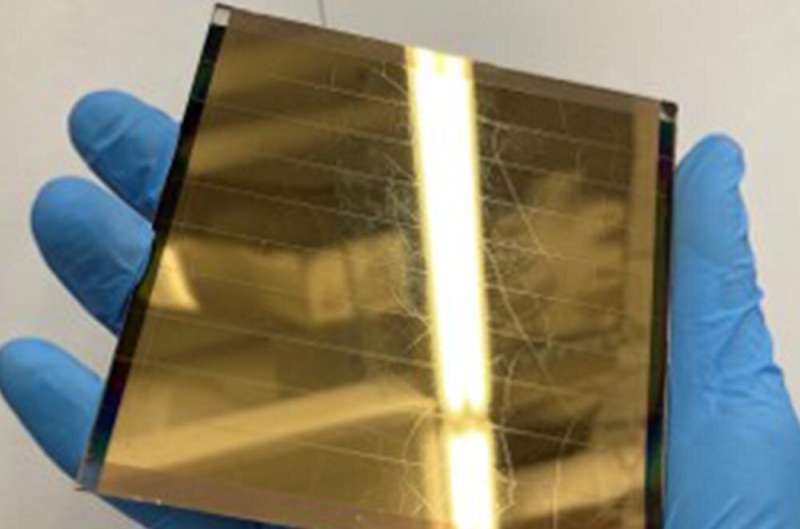Nanoparticles increase light scattering, boost solar cell performance

As demand for solar energy rises around the world, scientists are working to improve the performance of solar devices—important if the technology is to compete with traditional fuels. But researchers face theoretical limits on how efficient they can make solar cells.
One method for pushing efficiency beyond those limits involves adding up-conversion nanoparticles to the materials used in the solar devices. Up-conversion materials allow solar cells to harvest energy from a wider spectrum of light than normally possible. A team of scientists testing this approach found the nanoparticles boosted efficiency, but not for the reason they expected. Their research may suggest a new path forward for developing more efficient solar devices.
"Some researchers in the literature have hypothesized and showed results that up-conversion nanoparticles provide a boost in performance," said Shashank Priya, associate vice president for research and professor of materials science and engineering at Penn State. "But this research shows that it doesn't matter if you put in up-conversion nanoparticles or any other nanoparticles—they will show the boosted efficiency because of the enhance light scattering."
Adding nanoparticles is like adding millions of small mirrors inside a solar cell, the scientists said. Light traveling through the device hits the nanoparticles and scatters, potentially hitting other nanoparticles and reflecting many times within the device and providing a noticeable photocurrent enhancement.
The scientists said this light scattering process and not up-conversion led to boosted efficiency in solar devices they created.
"It doesn't matter what nanoparticles you put in, as long as they are nanosized with specific scattering properties it always leads to an increase in efficiency by a few percentage points," Kai Wang said, assistant research professor in Department of Materials Science and Engineering, and co-author of the study. "I think our research provides a nice explanation on why this type of composite light absorbing structure is interesting for the solar community."
Up-conversion nanoparticles work by absorbing infrared light and emitting visible light that solar cell can absorb and convert into additional power. Almost half of the energy from the sun reaches the Earth as infrared light, but most solar cells are unable to harvest it. Scientists have proposed that tapping into this could push solar cell efficiency past its theoretical ceiling, the Shockley-Queisser (SQ) limit, which is around 30% for single-junction solar cells powered by sunlight.
Previous studies have shown a 1% to 2% boost in efficiency using up-conversion nanoparticles. But the team found these materials provided only a very small boost in perovskite solar devices they created, the scientists said.
"We were focused initially on up-converting infrared light to the visible spectrum for absorption and energy conversion by perovskite, but the data from our Penn State colleagues indicated this was not a significant process," said Jim Piper, co-author and emeritus professor at Macquarie University, Australia. "Subsequently we provided undoped nanocrystals that do not give optical up-conversion and they were just as effective in enhancing the energy conversion efficiency."
The team performed theoretical calculations and found the boost in efficiency instead resulted from the nanoparticles' ability to improve light scattering.
"We started to basically play around with nanoparticle distribution in the model, and we started to see that as you distribute the particles far away from each other, you start to see some enhanced scattering," said Thomas Brown, associate professor at the University of Rome. "Then we had this breakthrough."
Adding the nanoparticles boosted the efficiency of perovskite solar cells by 1% in the study, the scientists reported in the journal ACS Energy Letters. The scientists said changing the shape, size and distribution of nanoparticles within these devices could yield higher efficiencies.
"So some optimum shape, distribution or size can actually lead to even more photocurrent enchantment," Priya said. "That could be the future research direction based on ideas from this research."
More information: Yuchen Hou et al, Homogenization of Optical Field in Nanocrystal-Embedded Perovskite Composites, ACS Energy Letters (2022). DOI: 10.1021/acsenergylett.2c00608
Journal information: ACS Energy Letters
Provided by Pennsylvania State University




















